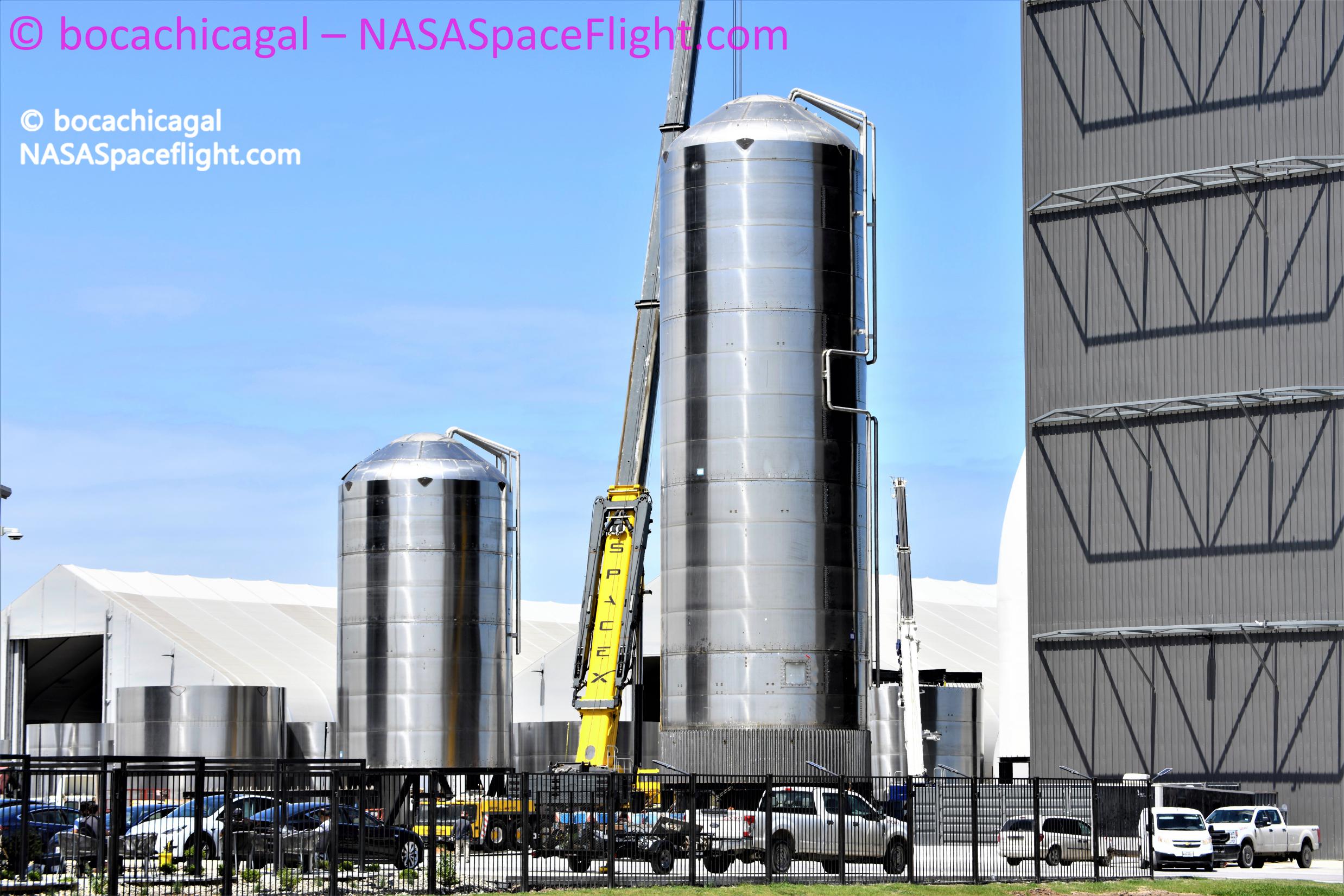

News
SpaceX is building launch pad tanks out of Starship parts and that’s a big deal
SpaceX has begun installing the first of numerous propellant storage tanks at its first orbital South Texas launch facilities – a mostly ordinary and expected step made extraordinary by the fact that those tanks will be built out of Starship parts.
Labeled “GSE” for Ground Support Equipment, the first signs of those self-built storage tanks began appearing at SpaceX’s Boca Chica Starship factory less than two months ago in mid-February. A matter of weeks later, the first of those SpaceX-brand cryogenic storage tanks is off to the launch site for installation (and insulation) while at least two more tanks are well on their way to completion.
While a few ground starge tanks may look like a distraction in the scope of a program tasked with building the world’s largest (and fully reusable) rocket, the existence of those tanks is far more significant than it might initially appear.
Simply put, rocket propellant storage – even for extremely cold cryogenic liquids like those that SpaceX uses – is a thoroughly solved problem. Numerous commercial vendors exist and industrial demand for practically identical tanks is far higher, further lowering commercial tank costs even for those with niche use-cases thanks to economies of scale. For SpaceX’s purposes, major discounts could like be secured given that the company would need to purchase around three to four-dozen commercial-off-the-shelf (COTS) 100,000 gallon tanks to supply a launch pad with enough commodities for two back-to-back launches of Starship and Super Heavy.
That initial launch capability – which SpaceX appears to be working towards – would likely allow the company to start orbital refueling test flights (and Starlink launches, perhaps) immediately after completion. However, that initial capability wouldn’t suffice for ambitious missions to Mars, the Moon, or higher Earth orbits; where one Starship would need to be rapidly refueled with 3-10+ tanker launches. A launch facility capable of supporting 5-10 back-to-back launches (optimally just a few hours apart) would require many times more propellant storage.
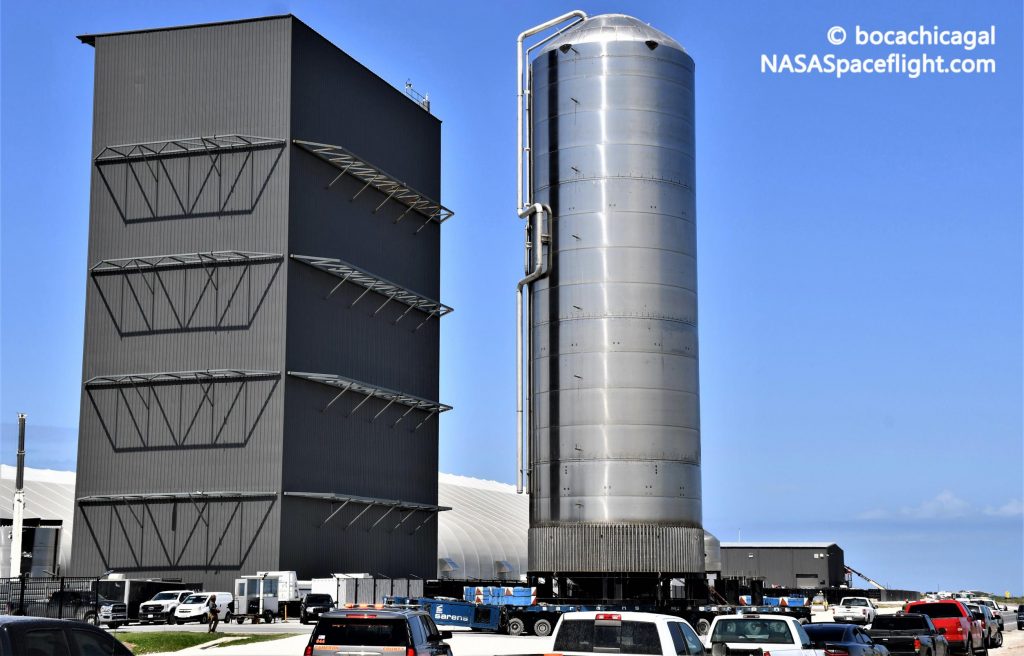
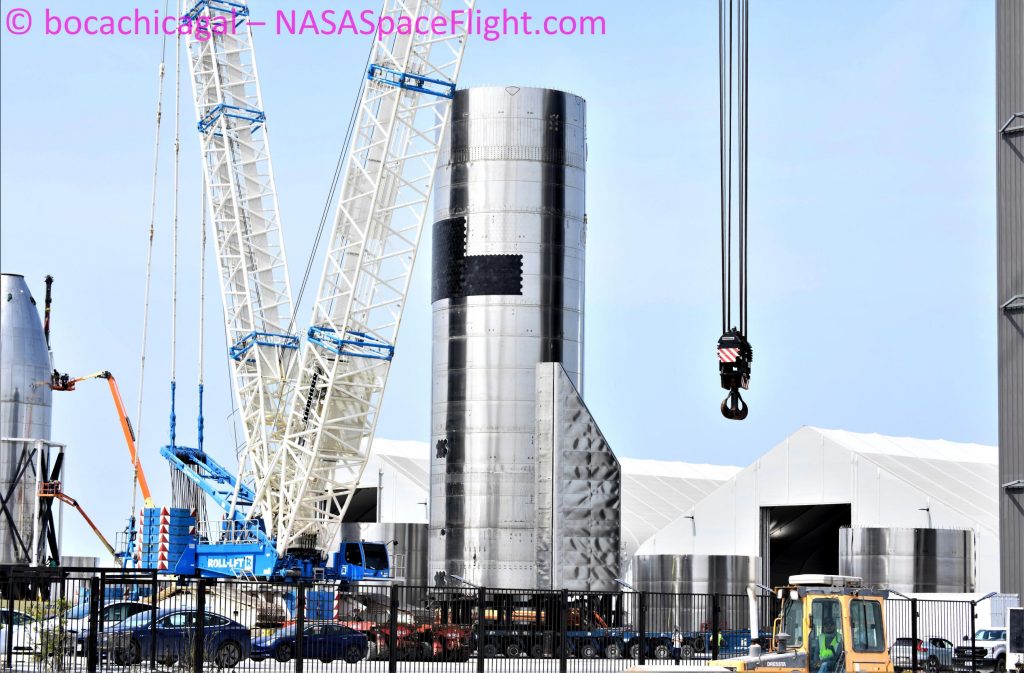
The point is that for the initial target of two (or so) launches between commodity resupply, SpaceX could likely acquire the few dozen new storage tanks it would need for a few million dollars apiece for a total cost likely between $50M and $100M. Instead, SpaceX has decided to design and build its own propellant storage tanks. Even more significantly, the GSE tanks SpaceX has already begun building appear to be virtually identical to Starships.
In other words, SpaceX is effectively taking identical rocket parts, slightly tweaking a handful of those parts, and turning what could have been a rocket into a propellant storage tank. This is significant because relative to all other rockets in history, even including SpaceX’s own Falcon 9 and Heavy, building storage tanks with unchanged rocket parts on a rocket assembly line would be roughly akin to hiring Vincent van Gogh to paint lane lines.
Ever since Elon Musk made the radical decision to switch from composite structures to stainless steel, Starship has always aimed to be radically different than any large rocket before it. Crucially, by using commodity steel, the CEO imagined SpaceX would be able to build Starships fairly easily and for pennies on the dollar next to even SpaceX’s exceptionally affordable Falcon 9. In the last 18 months, it’s become apparent that SpaceX has built a factory capable of churning out one or two massive steel rockets per month and is willing to consign at least four or five of those Starship prototypes to all-but-guaranteed failures for the sake of data-gathering and iterative improvement.
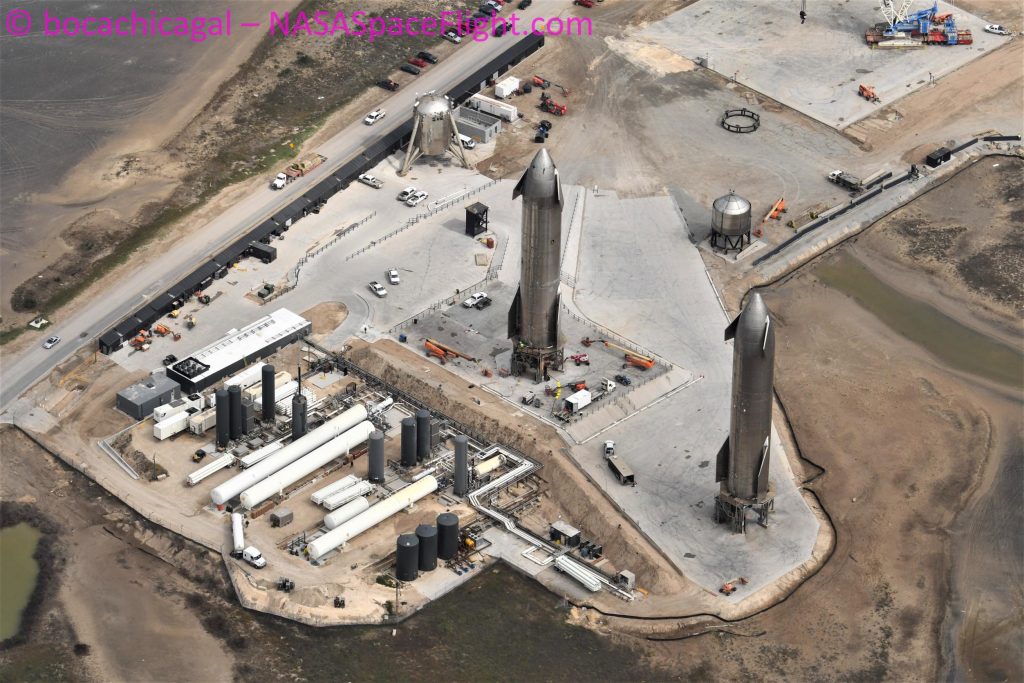
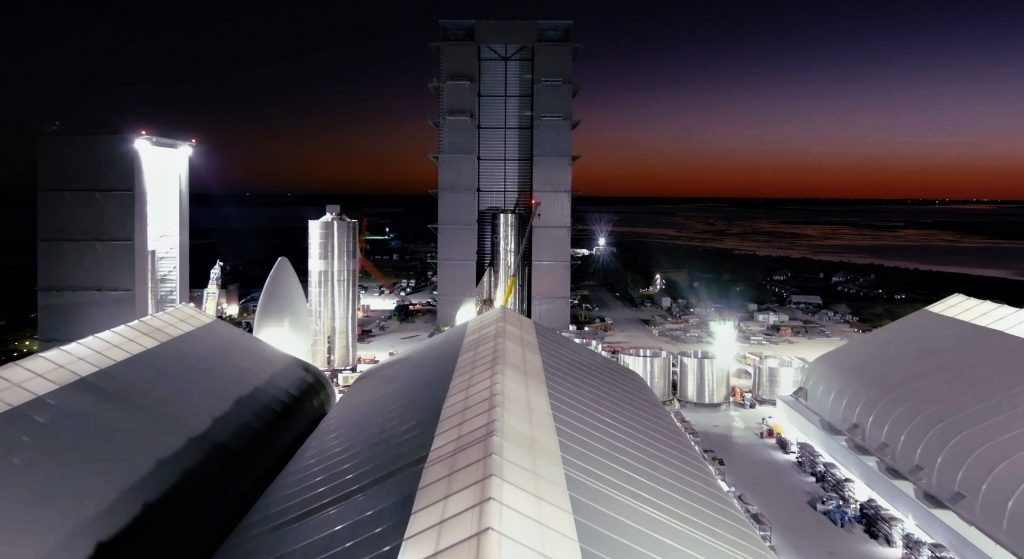
Technically, the most logical conclusion would be that Musk was right and that SpaceX has quickly developed the ability to build steel rockets larger than any other launch vehicle on Earth for perhaps just $5M or less apiece. However, SpaceX is also raising on the order of $1-2B in venture capital annually, so they could technically afford to shoulder the cost of extremely expensive Starship prototypes if the company was confident that there was a path to cut those costs and reach the targets needed for the rocket to make economical sense.
Now, the existence of self-built propellant storage tanks virtually identical to flightworthy Starship airframes all but guarantees that SpaceX is already building Starships for a few million dollars each – and possibly much less. More than a year ago, Musk said that SpaceX was already building the Raptor engines that will power Starship and Super Heavy for less than $1M apiece and was working to mass-produce a simpler variant for less than $250,000. Beyond engines and primary structures, Starship hardware is fairly simple and ranges from Tesla-derived motors, basic flaps, and landing legs to off-the-shelf pressure vessels (COPVs) and wiring. SpaceX has managed that extraordinary cost-efficiency despite the fact that Boca Chica is still nowhere close to the level of volume production Musk is aiming for, meaning that there are still far more efficiencies waiting to be realized.
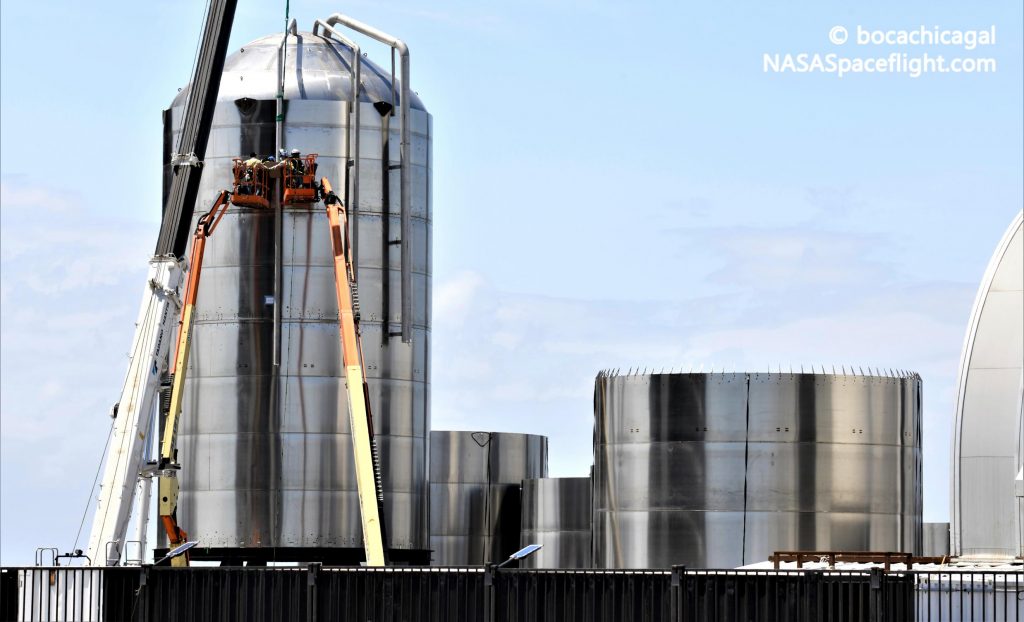

For now, with virtually no retooling and the exact same assembly line, SpaceX’s South Texas rocket factory is busy churning out massive launch pad tanks – one of which is already preparing for installation while another two speed towards completion. All told, SpaceX appears to be preparing foundations for seven 9m-wide (30ft), 27.5m-tall (90ft) Starship-derived tanks that should be capable of storing ~2200 tons (4.9 million pounds) of subcooled liquid methane in three tanks and ~7300 tons (16.1 million pounds) of liquid oxygen in the other four tanks – enough for two orbital Starship launches.
News
Tesla launches in India with Model Y, showing pricing will be biggest challenge
Tesla finally got its Model Y launched in India, but it will surely come at a price for consumers.

Tesla has officially launched in India following years of delays, as it brought its Model Y to the market for the first time on Tuesday.
However, the launch showed that pricing is going to be its biggest challenge. The all-electric Model Y is priced significantly higher than in other major markets in which Tesla operates.
On Tuesday, Tesla’s Model Y went up for sale for 59,89,000 rupees for the Rear-Wheel Drive configuration, while the Long Range Rear-Wheel Drive was priced at 67,89,000.
This equates to $69,686 for the RWD and $78,994 for the Long Range RWD, a substantial markup compared to what these cars sell for in the United States.
🚨 Here’s the difference in price for the Tesla Model Y in the U.S. compared to India.
🚨 59,89,000 is $69,686
🚨 67,89,000 is $78,994 pic.twitter.com/7EUzyWLcED— TESLARATI (@Teslarati) July 15, 2025
Deliveries are currently scheduled for the third quarter, and it will be interesting to see how many units they can sell in the market at this price point.
The price includes tariffs and additional fees that are applied by the Indian government, which has aimed to work with foreign automakers to come to terms on lower duties that increase vehicle cost.
Tesla Model Y seen testing under wraps in India ahead of launch
There is a chance that these duties will be removed, which would create a more stable and affordable pricing model for Tesla in the future. President Trump and Indian Prime Minister Narendra Modi continue to iron out those details.
Maharashtra Chief Minister Devendra Fadnavis said to reporters outside the company’s new outlet in the region (via Reuters):
“In the future, we wish to see R&D and manufacturing done in India, and I am sure at an appropriate stage, Tesla will think about it.”
It appears to be eerily similar to the same “game of chicken” Tesla played with Indian government officials for the past few years. Tesla has always wanted to enter India, but was unable to do so due to these import duties.
India wanted Tesla to commit to building a Gigafactory in the country, but Tesla wanted to test demand first.
It seems this could be that demand test, and the duties are going to have a significant impact on what demand will actually be.
Elon Musk
Tesla ups Robotaxi fare price to another comical figure with service area expansion
Tesla upped its fare price for a Robotaxi ride from $4.20 to, you guessed it, $6.90.

Tesla has upped its fare price for the Robotaxi platform in Austin for the first time since its launch on June 22. The increase came on the same day that Tesla expanded its Service Area for the Robotaxi ride-hailing service, offering rides to a broader portion of the city.
The price is up from $4.20, a figure that many Tesla fans will find amusing, considering CEO Elon Musk has used that number, as well as ’69,’ as a light-hearted attempt at comedy over the past several years.
Musk confirmed yesterday that Tesla would up the price per ride from that $4.20 point to $6.90. Are we really surprised that is what the company decided on, as the expansion of the Service Area also took effect on Monday?
But the price is now a princely $6.90, as foretold in the prophecy 😂
— Elon Musk (@elonmusk) July 14, 2025
The Service Area expansion was also somewhat of a joke too, especially considering the shape of the new region where the driverless service can travel.
I wrote yesterday about how it might be funny, but in reality, it is more of a message to competitors that Tesla can expand in Austin wherever it wants at any time.
Tesla’s Robotaxi expansion wasn’t a joke, it was a warning to competitors
It was only a matter of time before the Robotaxi platform would subject riders to a higher, flat fee for a ride. This is primarily due to two reasons: the size of the access program is increasing, and, more importantly, the service area is expanding in size.
Tesla has already surpassed Waymo in Austin in terms of its service area, which is roughly five square miles larger. Waymo launched driverless rides to the public back in March, while Tesla’s just became available to a small group in June. Tesla has already expanded it, allowing new members to hail a ride from a driverless Model Y nearly every day.
The Robotaxi app is also becoming more robust as Tesla is adding new features with updates. It has already been updated on two occasions, with the most recent improvements being rolled out yesterday.
Tesla updates Robotaxi app with several big changes, including wider service area
News
Tesla Model Y and Model 3 dominate U.S. EV sales despite headwinds
Tesla’s two mainstream vehicles accounted for more than 40% of all EVs sold in the United States in Q2 2025.

Tesla’s Model Y and Model 3 remained the top-selling electric vehicles in the U.S. during Q2 2025, even as the broader EV market dipped 6.3% year-over-year.
The Model Y logged 86,120 units sold, followed by the Model 3 at 48,803. This means that Tesla’s two mainstream vehicles accounted for 43% of all EVs sold in the United States during the second quarter, as per data from Cox Automotive.
Tesla leads amid tax credit uncertainty and a tough first half
Tesla’s performance in Q2 is notable given a series of hurdles earlier in the year. The company temporarily paused Model Y deliveries in Q1 as it transitioned to the production of the new Model Y, and its retail presence was hit by protests and vandalism tied to political backlash against CEO Elon Musk. The fallout carried into Q2, yet Tesla’s two mass-market vehicles still outsold the next eight EVs combined.
Q2 marked just the third-ever YoY decline in quarterly EV sales, totaling 310,839 units. Electric vehicle sales, however, were still up 4.9% from Q1 and reached a record 607,089 units in the first half of 2025. Analysts also expect a surge in Q3 as buyers rush to qualify for federal EV tax credits before they expire on October 1, Cox Automotive noted in a post.
Legacy rivals gain ground, but Tesla holds its commanding lead
General Motors more than doubled its EV volume in the first half of 2025, selling over 78,000 units and boosting its EV market share to 12.9%. Chevrolet became the second-best-selling EV brand, pushing GM past Ford and Hyundai. Tesla, however, still retained a commanding 44.7% electric vehicle market share despite a 12% drop in in Q2 revenue, following a decline of almost 9% in Q1.
Incentives reached record highs in Q2, averaging 14.8% of transaction prices, roughly $8,500 per vehicle. As government support winds down, the used EV market is also gaining momentum, with over 100,000 used EVs sold in Q2.
Q2 2025 Kelley Blue Book EV Sales Report by Simon Alvarez on Scribd
-

 News3 days ago
News3 days agoTesla debuts hands-free Grok AI with update 2025.26: What you need to know
-

 Elon Musk1 week ago
Elon Musk1 week agoElon Musk confirms Grok 4 launch on July 9 with livestream event
-

 Elon Musk5 days ago
Elon Musk5 days agoxAI launches Grok 4 with new $300/month SuperGrok Heavy subscription
-

 News2 weeks ago
News2 weeks agoTesla Model 3 ranks as the safest new car in Europe for 2025, per Euro NCAP tests
-

 Elon Musk2 weeks ago
Elon Musk2 weeks agoxAI’s Memphis data center receives air permit despite community criticism
-

 News5 days ago
News5 days agoTesla begins Robotaxi certification push in Arizona: report
-

 Elon Musk2 weeks ago
Elon Musk2 weeks agoTesla reveals it is using AI to make factories more sustainable: here’s how
-

 Elon Musk2 weeks ago
Elon Musk2 weeks agoTesla scrambles after Musk sidekick exit, CEO takes over sales


















